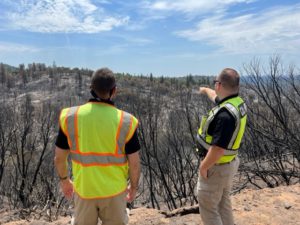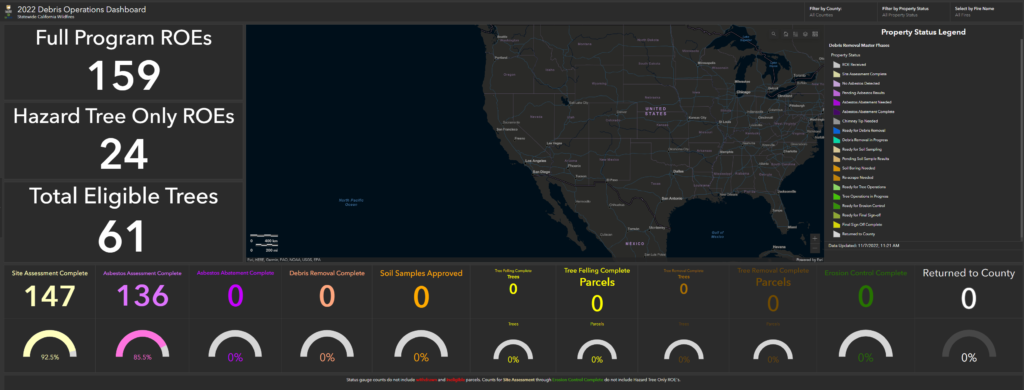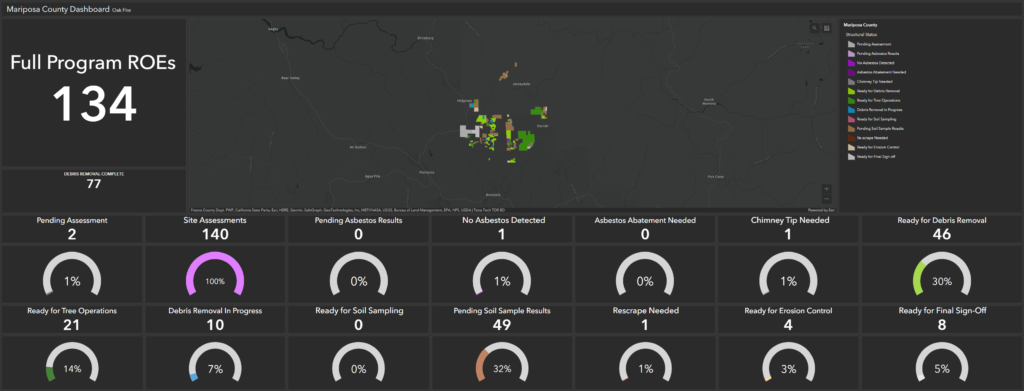Property Owners in Siskiyou and Mariposa Counties Must Sign a Right-of-Entry Permit to Participate
SACRAMENTO – As property owners affected by this year’s wildfires start the process of rebuilding, the California Governor’s Office of Emergency Services (Cal OES) reminds survivors about the state- and county-led programs available to assist with recovery.
 Currently, the state-led Consolidated Debris Removal Program for the Mountain, Mill, and McKinney fires in Siskiyou County is being managed by Cal OES, the Department of Resources Recycling and Recovery (CalRecycle), and Siskiyou County. The Consolidated Debris Removal Program for the Oak Fire in Mariposa County is county-led, with technical assistance being provided by Cal OES and CalRecycle.
Currently, the state-led Consolidated Debris Removal Program for the Mountain, Mill, and McKinney fires in Siskiyou County is being managed by Cal OES, the Department of Resources Recycling and Recovery (CalRecycle), and Siskiyou County. The Consolidated Debris Removal Program for the Oak Fire in Mariposa County is county-led, with technical assistance being provided by Cal OES and CalRecycle.

The Consolidated Debris Removal Program consists of two phases. Phase one, which is the removal of hazardous household materials, is now complete. Phase two, which removes the remaining contaminated debris, is currently underway in both Mariposa and Siskiyou counties.
Property owners with fire-damaged structures and trees in danger of falling on public roads and other infrastructure become a critical part of the process by opting into the Consolidated Debris Removal Program. Survivors can participate by filling out a Right-of-Entry(ROE) Permit, which grants contracted work crews access to their property.
Before the debris removal can begin, property owners must submit an ROE form to their respective counties.
Wildfire survivors affected by the Mountain, Mill, and McKinney fires in Siskiyou County can sign up for the state-led Consolidated Debris Removal Program by submitting an ROE to Siskiyou County Environmental Health. Additional information for Siskiyou County wildfire survivors, including a link to the ROE form, can be found here.
Siskiyou County wildfire survivors participating in the State’s Consolidated Debris Removal Program can access an informational dashboard that provides details of the cleanup progress.
The Debris Operations Dashboard for the Mountain, Mill, and McKinney wildfires is updated every hour and provides users with the ability to sort by branch or county via the filters at the top of the page. Users can also search by address via the magnifying glass icon at the top of the map to access the debris removal data of their property.

Oak Fire survivors in Mariposa County can participate in the county-led Consolidated Debris Removal Program by filling out an ROE and submitting it to the Mariposa County Debris Removal Operations Center. Property owners who live along a public road should submit an ROE to have their trees assessed at no out-of-pocket cost and removed if they pose a hazard. Additional information for Mariposa County wildfire survivors, including a link to the ROE form, can be found here.
Property owners in Mariposa County participating in the county-led Consolidated Debris Removal Program can access a Debris Operations Dashboard for Oak Fire survivors that provides details of the cleanup progress.

Learn more about the ROE form below:
Q: What is a Right-of-Entry form?
A: It grants the local and state government access to your property in order to clean up after a wildfire.
Q: Is the debris removal free?
A: All initial costs will be paid by state and federal agencies. However, if property owners have insurance that covers debris removal, owners must inform their local officials.
Q: How are properties prioritized for debris removal?
A: Officials will give priority to sites in or near sensitive areas such as watersheds, schools, daycare centers, and healthcare facilities. Then, they will identify areas where there are groups of eligible properties.
Q: Should I be present during the cleanup process?
A: Owners do not need to be present but can view the cleanup from a safe distance on their property. Exclusion zones will be established to ensure the safety of the public and workers.
Q: Will debris removal crews be looking for code violations?
A: No. Debris removal crews are on-site to perform specific operations related to the removal of contaminated soil, ash, debris, concrete, and metals.
###

